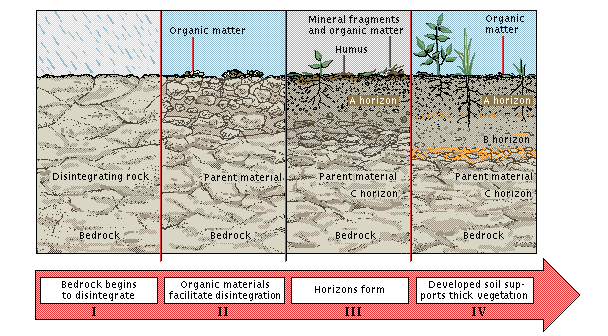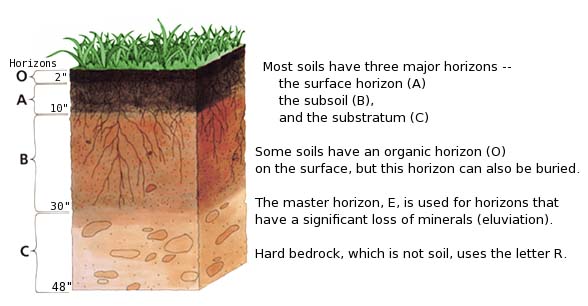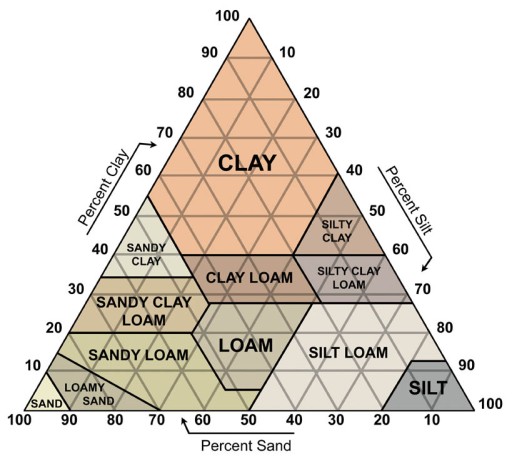Factors of Soil Formation
1) Parent material: unconsolidated material in which soil development occurs
2) Climate: particularly precipitation and temperature
3) Biota: living organisms including vegetation, microbes, soil animals, and human beings
4) Topography: slope, aspect, and elevation
5) Time: period that parent materials are subjected to soil formation
From Wikipedia:
A soil horizon is a layer parallel to the soil surface, whose physical characteristics differ from the layers above and beneath. Each soil type has at least one, usually three or four horizons. Horizons are defined in most cases by obvious physical features, chiefly colour and texture. These may be described both in absolute terms (particle size distribution for texture, for instance) and in terms relative to the surrounding material, i.e. ‘coarser’ or ‘sandier’ than the horizons above and below. water dissolves and removes nutrients as it passes through the soil.
From Wikipedia:
Soil texture is a qualitative classification tool used in both the field and laboratory to determine classes for agricultural soils based on their physical texture. The classes are distinguished in the field by the ‘textural feel’ which can be further clarified by separating the relative proportions of sand, silt and clay using grading sieves: The Particle Size Distribution (PSD). The class is then used to determine crop suitability and to approximate the soils responses to environmental and management conditions such as drought or calcium (lime) requirements. A qualitative rather than a quantitative tool it is a fast, simple and effective means to assess the soils physical characteristics. Although the U.S.D.A. system uses 12 classes whilst the U.K.-ADAS uses just 11, the systems are mutually compatible as shown in the combined soil textural triangle below.
Heres an alternate approach for evaluating soil profiles (aka the ‘ball and sausage’ test); I like this one for it’s English narrator and his quirky out-takes:



